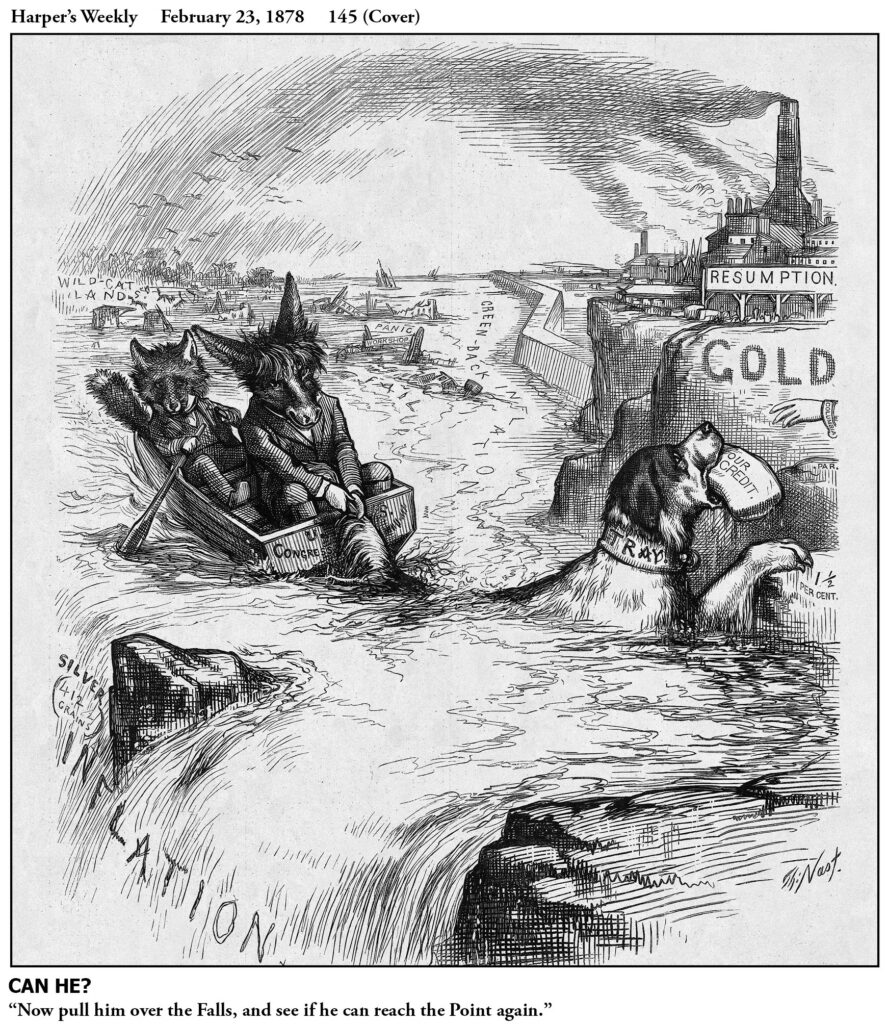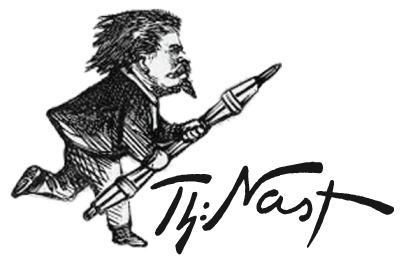
Harper’s Weekly – February 23, 1878
Nast was not a fan of Republican President Rutherford Hayes who succeeded his idol, Ulysses Grant, in the White House. Hayes had reversed Grant’s policies by removing Federal troops from the Reconstructed Southern States and enabling ex-Confederates to control their state governments.
The money question was of prime importance to President Hayes. He was determined to pay down the $2 billion national debt with gold, to ensure specie resumption in January 1879, and to limit further inroads from greenbacks and “free” (unlimited) silver. Nast believed in, and probably admired, Hayes’s determination and hard-earned success, but never gave him any more personal public support than he did during his campaign against Samuel Tilden. Nevertheless, by attacking the inflationists with several serialized approaches (as he had Tilden), Nast undoubtedly helped him.
Without fanfare, Nast also introduced another symbol to represent the Greenback Party, which had organized two years earlier. James Weaver, a former Republican, was a prominent promoter; he was elected to Congress from Iowa in 1878 and received three percent of the popular vote for President in 1880. Nast depicted him as Weaver the Ass from Shakespeare’s A Midsummer Night’s Dream.
Here, Weaver was in the same Congressional boat as the Democratic fox, trying to pull the national credit over Inflation Falls.
